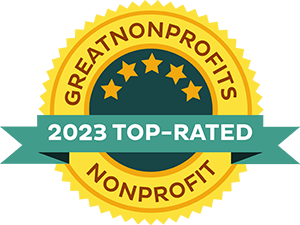By Stephanie Kistner, Education & Programs Associate
Last week, hundreds of arts supporters from across the nation made their way to Washington D.C. to meet with their Congressional representatives in order express their support for the arts. The 26th annual Arts Advocacy Day, organized by Americans for the Arts, is a place where artists, art organizations, and arts advocates came together to make a case for the federal support of the arts. A long time arts supporter and advocate, I was excited to attend this year for the first time!
I was eager and ready to advocate, but since it was my first Arts Advocacy Day I didn’t really know what to expect. Would I encounter picketers with handmade signs “Support the Arts!”? How many people would be there? Would I actually get to meet with representatives? Would anyone be interested in what I had to say?
I didn’t see any handmade signs while on Capitol Hill, but I did witness hundres of arts advocates racing from one meeting to the next, trying to reach as many representatives as possible in a short period of time. Everyone we met with during these meetings was genuinely interested in hearing what we had to say. They listened to me speak about why I thought the arts and education were so important and how critical it is for students to have access to an arts education. Thoughtful questions were asked and I was prepared with numbers and statistics to back up my case.
Did you know that the arts help close the achievement gap and prepare students with crucial 21st Century Skills such as critical and innovative thinking abilities? And did you know that students who have access to the arts are more likely to graduate high school, attend college and pursue gainful employment? It’s also been shown that a school rich in the arts is able to retain high quality teachers for longer periods of time; a healthy school community that includes the arts creates a learning environment where teachers want to teach, and students want to learn.
Arts education is a passion of mine, but it wasn’t the only issue on the table at Arts Advocacy Day. In order to highlight the most important issues regarding the arts, Americans for the Arts put together a very useful Summary of Legislative Requests to refer to while we were on the hill. There were three major asks that we presented to each person we met with:
- We urged for the support of a budget of $155 million for the National Endowment for the Arts (NEA). In 2012 the NEA awarded more than 2,200 grants to organizations, schools and artists that supported the arts in almost 5,000 communities. To put this budget into perspective, current funding amounts to just 47 cents per capita, as compared to 70 cents per capita in 1992.
- We also asked Congress to appropriate $30 million for the Arts in Education program in the FY 2014 Labor-HHS-Education appropriations bill and to retain the Arts in Education program as a distinct grant competition in FY 2014 appropriations. We requested that Members of Congress retain the arts in the definition of core academic subjects and strengthen equitable access to arts learning by requiring states to report annually on student access to, and participation in, all core academic subjects, including the arts.
- And lastly, we encouraged Congress to preserve incentives for charitable giving by protecting the charitable tax deduction from rate caps or other new limitations. There are approximately 1.4 million nonprofit 501(c)(3) organizations that contribute $1.1 trillion in human services every year, supporting 13.5 million jobs. In recognition of their benefit to the public good, contributions made to 501(c)(3) nonprofits have been tax-deductible since 1917.

Arts Advocacy Day may only come around once a year, but you can advocate for the arts all year round by sending your representatives a quick letter stating why you support the arts. Visit the Americans for the Arts Action Center to find out who your representatives are and send them an email directly from the site, it can’t get any easier than that! To find out more about current issues in the arts and to help make your case the 2013 Congressional Arts Handbook is full of useful facts and figures.
Arts Advocacy Day annually brings together hundreds of arts advocates who care deeply about the state of the arts in America. Together, we created a unified voice that made the case for why the federal government should support, and continue to support the arts. I left Arts Advocacy Day 2013 inspired by the political process, by other arts advocates and by the power that a unified voice can have.
Support the arts today!




